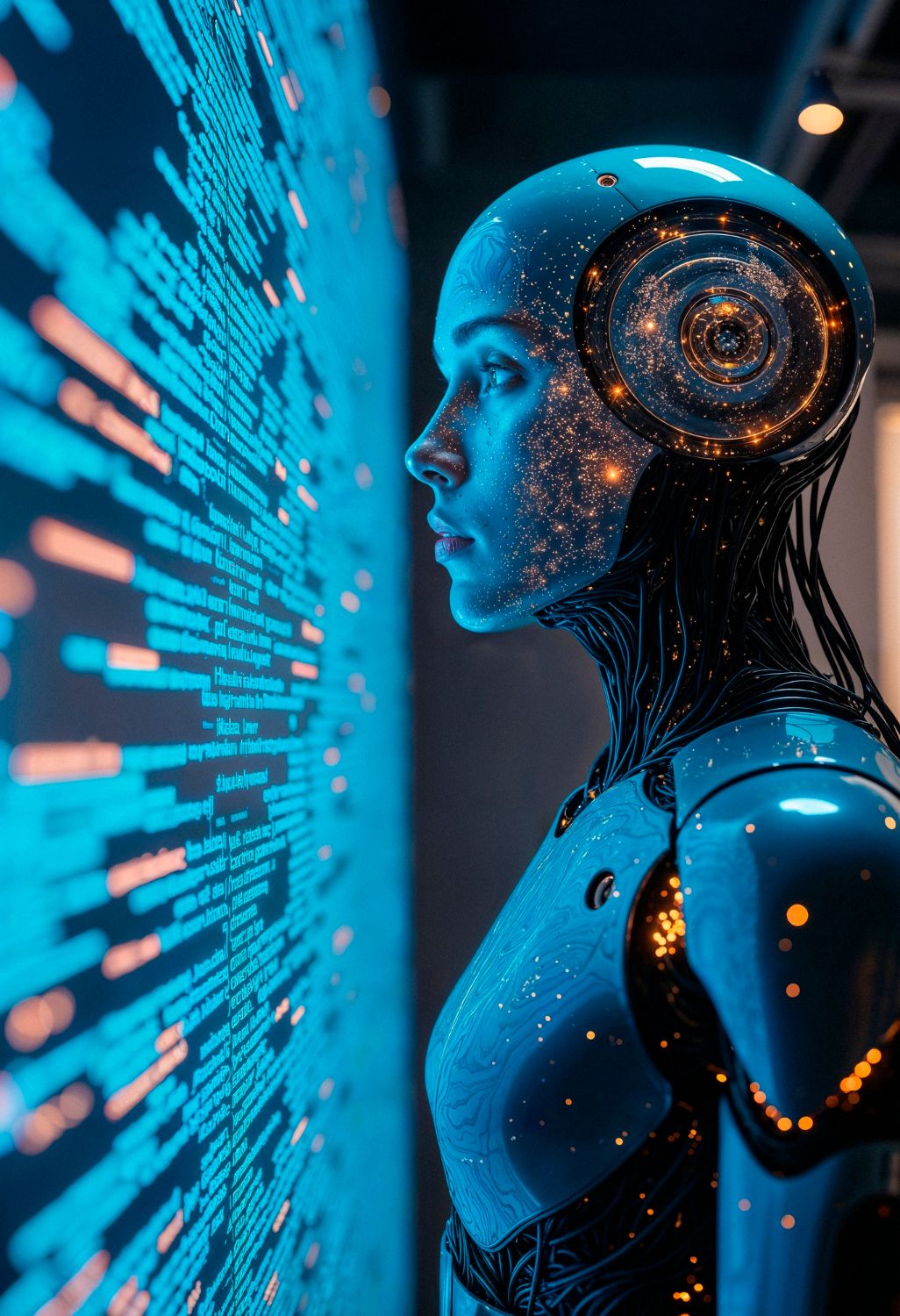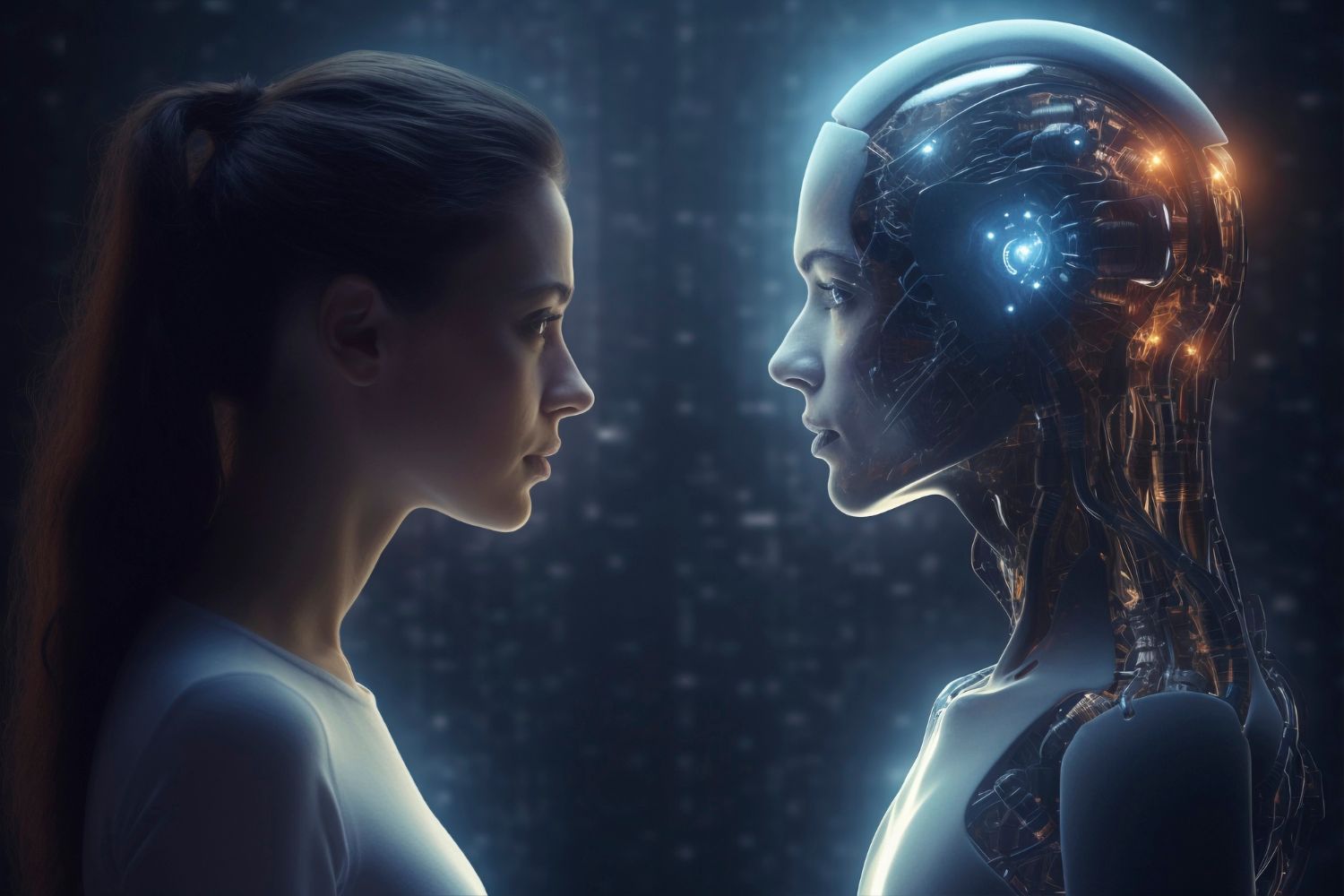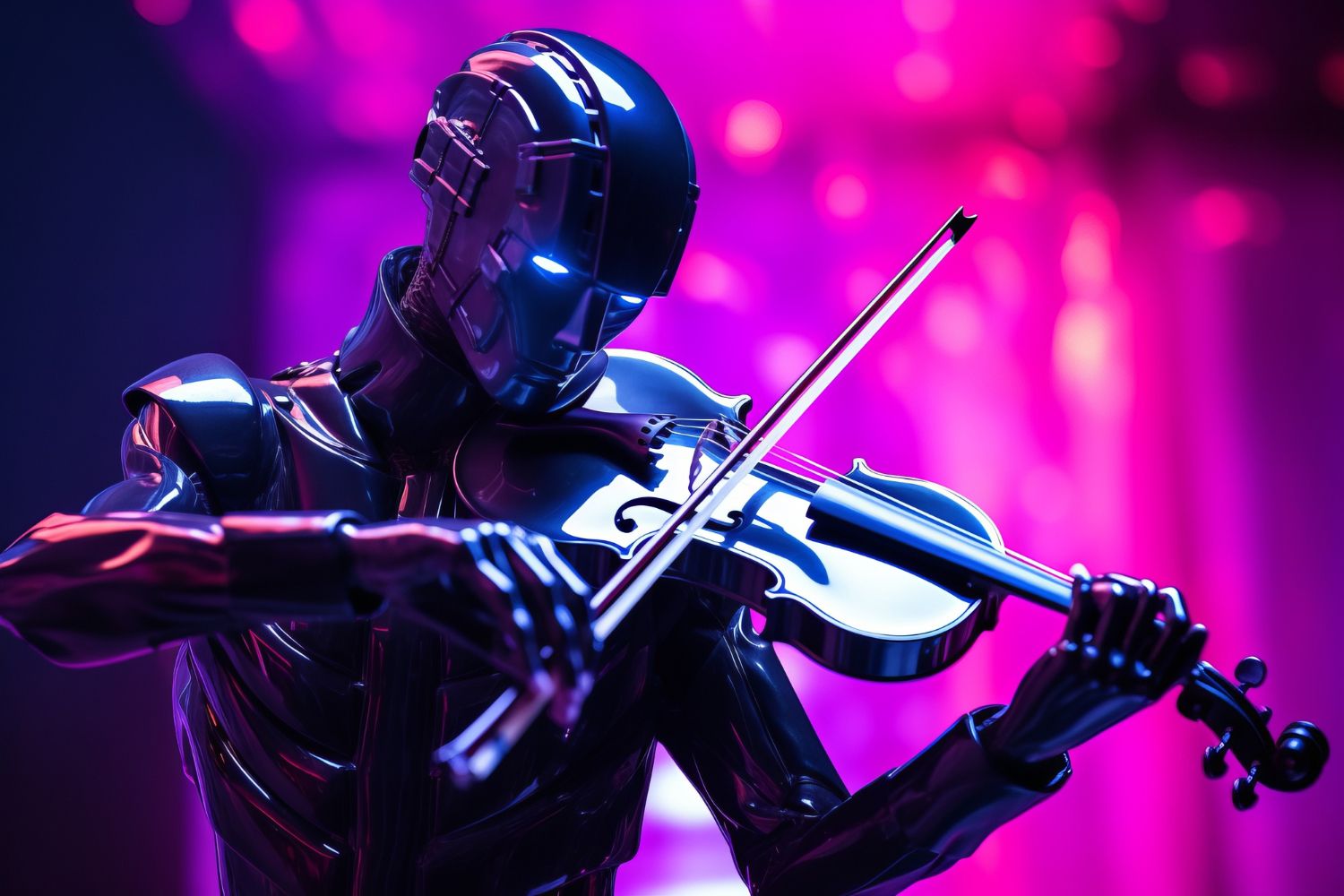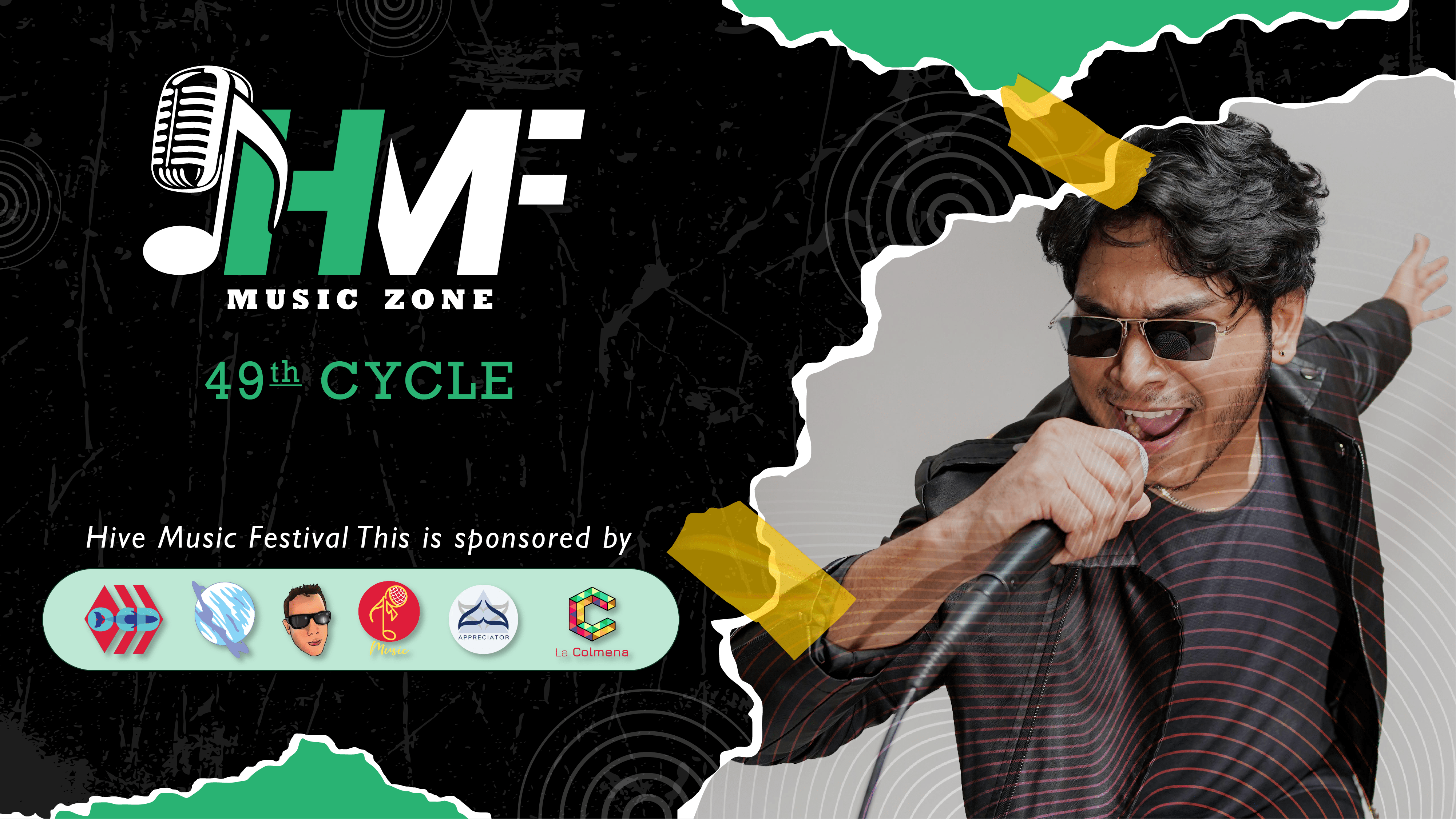
Source | Fuente
Artificial Intelligence (AI) Vs Plagiarism
_Inteligencia Artificial (IA) Vs Plagio_

[**Source | _Fuente_**](https://www.freepik.com/free-ai-image/ai-robot-gazing-code-futuristic-cyberpunk-vision_419054837.htm#fromView=search&page=1&position=24&uuid=7a81328e-0865-4999-ad43-f8aab8cb5949&query=Inteligencia+artificial)
Artificial Intelligence (AI) gets its information from websites, social networks, public and private databases, academic books and publications, and user-generated data, such as when you search and download apps and services, or give it feedback. Much of the data you request in the prompt, such as instructions or questions, is sought from other query sources. The answers have grammatical patterns and syntax that make it possible to identify their usage as you read them. Even if you try to paraphrase them, it can still be considered plagiarism. The problem results in many specific phrases or passages that are obtained without attributing the original author, results in no citation to the sources and the content is not original. In the Hive Blockchain the content must be original, and is based on opinions, experiences and analysis of a topic. AI can be a tool that can generate good ideas, but copying and pasting verbatim should be avoided.
Spanish | Español (click here)
_La Inteligencia Artificial (IA) obtiene su información de páginas web, redes sociales, bases de datos públicas y privadas, libros y publicaciones académicas, y datos generados por el usuario, como por ejemplo cuando efectúas búsquedas y descargas de aplicaciones y servicios, o la retroalimentas. Muchos de los datos que solicitas en el prompt, como instrucciones o preguntas, son buscados de otras fuentes de consulta. Las respuestas tienen patrones gramaticales y una sintaxis que hace posible identificar su uso al leerla. Incluso si intentas parafrasearlas, igualmente puede ser considerado un plagio. El problema resulta en que muchas frases o pasajes específicos que son obtenidos sin atribuir al autor original, resultados que no citan a las fuentes y el contenido no es original. En la Blockchain de Hive el contenido debe ser original, y está basado en opiniones, experiencias y el análisis de un tema. La IA puede ser una herramienta que puede generar buenas ideas, pero se debe evitar copiar y pegar textualmente._
 🔸
🔸 Vote Aliento | Vota por Aliento
🔸 


[**Source | _Fuente_**](https://www.freepik.com/free-ai-image/futuristic-technology-concept_396780789.htm#fromView=search&page=1&position=47&uuid=565cb405-df4c-4ef0-8c49-4dd32b534745&query=Inteligencia+artificial+algoritmo)
Curators and algorithms can easily identify which content represents plagiarism or was made with AI. Identifying the use of AI requires critical review and judgement by curators, as online tools are not 100% infallible. There are different online tools to detect plagiarism such as Turnitin, (in academia), QuillBot, Copyleaks, Plagium, Scribbr and Small SEO Tools, among others. From the human point of view, it is possible to do a linguistic analysis, assess the probability of it being generated by AI, identify robotic sentences and even specific models. In the case of music, it is much more complex and elements such as melody, harmony, rhythm, lyrics, structure, and ‘Feeling’ or ‘Groove’ must be evaluated. There are some practices that require permissions and copyright acknowledgements, such as sampling, interpolation, and covering. Shazam or SoundHound can help to recognise songs, but they are not useful for identifying plagiarism.
Spanish | Español (click here)
_Los curadores y los algoritmos pueden identificar fácilmente qué contenido representa un plagio o fue realizado con IA. Para identificar el uso de la Inteligencia Artificial se requiere la revisión y el juicio crítico de los curadores, ya que las herramientas en línea no son 100% infalibles. Existen diferentes herramientas en línea para detectar plagio como Turnitin, (en el ámbito académico), QuillBot, Copyleaks, Plagium, Scribbr y Small SEO Tools, entre otros. Desde el punto de vista humano, se puede hacer un análisis lingüístico, evaluar la probabilidad de que sea generado por IA, identificar frases robóticas e incluso modelos específicos. En el caso de la música, es mucho más complejo y se deben evaluar elementos como la melodía, la armonía, el ritmo, la letra, la estructura, y el "Feeling" o "Groove". Existen algunas prácticas que requieren permisos y reconocimientos de los derechos de autor, como el sample, la interpolación, y el cover. Shazam o SoundHound pueden ayudar a reconocer canciones, pero no sirven para identificar plagio._
 Source | Fuente
Source | Fuente

 🔸
🔸 












